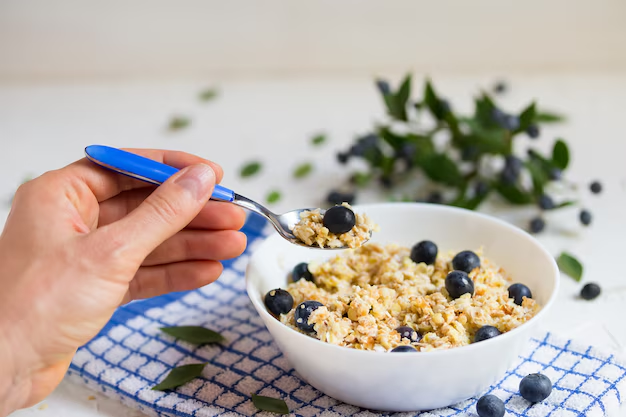The Best Cereal Options for Diabetics
Navigating the cereal aisle can be a daunting task for anyone, but it can be especially challenging for those living with diabetes. The sheer number of options can be overwhelming, and many popular cereals are packed with sugar and refined carbohydrates, which can cause blood sugar spikes. So, what cereals should diabetics eat to maintain their health without sacrificing taste?
Understanding the Diabetic-Friendly Cereal Criteria
When choosing a cereal, diabetics should look for options with high fiber and low sugar content. Fiber is a critical component because it helps slow the digestion of carbohydrates, leading to a more gradual release of glucose into the bloodstream. Aim for cereals that have at least 3 grams of fiber and less than 5 grams of sugar per serving.
Top Cereal Choices for Diabetics
Oatmeal: This classic option is a great choice as it contains soluble fiber that can help control blood sugar levels. Opt for steel-cut or old-fashioned oats without added sugars.
Bran Flakes: These are typically high in fiber and low in sugar. Adding your own sodium-free nuts or seeds can enhance the nutritional value.
Muesli: Originally a Swiss breakfast, muesli is rich in grains, nuts, and fruits. Choose unsweetened varieties to avoid added sugars.
Unsweetened Whole Grain: Look for cereals that use whole grains as the first ingredient, ensuring minimal processing and a higher fiber content.
Tips to Make Your Cereal More Diabetic-Friendly
Add Protein: Enhance your meal by adding Greek yogurt, nuts, or seeds, which can help control blood sugar levels by slowing carbohydrate absorption.
Use Milk Alternatives: Consider unsweetened almond or soy milk, which typically contain fewer carbohydrates than regular milk.
Natural Sweeteners: If you crave a sweeter taste, add a small amount of cinnamon or a few fresh berries, which can provide antioxidants and additional fiber.
Beyond Nutrition: Exploring Financial and Educational Resources
Managing diabetes often comes with financial burdens, from medical supplies to dietary needs. Fortunately, there are several resources available that can offer relief. It's worth exploring financial assistance programs, debt relief options, and even educational grants that can help ease the load.
Financial Assistance for Diabetic Care
Medicaid and Medicare: These government programs offer benefits that can help cover the cost of diabetes management supplies.
Nonprofit Organizations: Groups like the American Diabetes Association offer resources and financial aid for those struggling with medical expenses.
Pharmaceutical Company Programs: Many drug companies provide programs to help patients obtain prescriptions at a reduced cost.
Educational Grants: For those looking to expand their knowledge and skills, educational grants can offer financial support, potentially paving the way to higher income and better healthcare access.
🍎 Quick List of Resources
- Medicaid & Medicare 🏥: Health coverage options for qualified individuals
- American Diabetes Association ❤️: Support and resources for diabetes care
- Pharmaceutical Assistance Programs 💊: Reduced prescription costs
- Educational Grants 🎓: Funding for further education and career advancement
Choosing the right cereal is just one part of managing diabetes effectively. By focusing on whole grains, high fiber, and low sugar options, and by exploring financial and educational resources, diabetics can take control of their health and their future.
